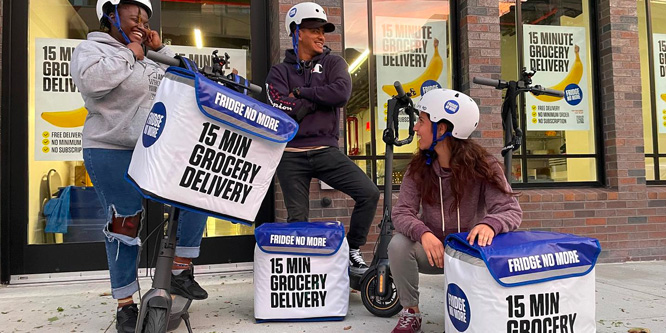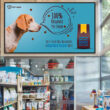
Exploring Rapid Grocery Delivery Startup Pitfalls
In the dynamic realm of e-commerce, rapid grocery delivery startups emerged as pioneers, promising consumers the unparalleled convenience of having their groceries delivered within a swift 15 minutes. Fueled by the demands of modern life, this innovative model quickly gained popularity, capturing the imaginations of consumers and investors alike.
However, the narrative of the 15-minute delivery model isn’t a tale of pure triumph; it’s also one riddled with substantial challenges and pitfalls. In this thorough exploration, we aim to untangle the intricate reasons behind the model’s failure in North America while shedding light on the common pitfalls faced by rapid grocery delivery startups.
The Rise of Rapid Grocery Delivery Startups
As urbanization accelerated and life’s pace quickened, consumers sought efficient solutions to their daily needs. Rapid grocery delivery startups responded to this demand by promising a revolutionary shift in the traditional grocery shopping experience. The allure of essential items delivered almost instantaneously resonated with time-constrained consumers seeking ultimate convenience.
The 15-Minute Delivery Model
The core of the 15-minute delivery model lay in its promise to redefine convenience. Customers were enticed by the prospect of receiving fresh produce, pantry staples, and perishables within just fifteen minutes. This eliminated the need for meticulous planning and drastically reduced waiting times, captivating consumers and leading to successful initial market entries.
Reasons Behind Failure
Despite the initial wave of enthusiasm, the 15-minute delivery model encountered formidable challenges, ultimately leading to its decline in North America.
Market Saturation and Intense Competition:
The rapid proliferation of startups offering similar services resulted in a saturated market. Intense competition ensued, triggering a race to the bottom in terms of pricing, making differentiation and profitability increasingly challenging.
Operational Challenges:
Maintaining a 15-minute delivery promise proved more challenging than anticipated. Streamlining operations, from order processing to delivery, required meticulous coordination. Any disruption in this intricate chain led to delays, eroding the fundamental appeal of rapid delivery.
Logistics Issues:
The strain on delivery networks became apparent as startups struggled to scale rapidly. Logistics challenges, including traffic, weather disruptions, and urban infrastructure limitations, emerged as significant obstacles.
Consumer Behavior:
Contrary to expectations, not all consumers embraced the 15-minute delivery model. A shift in behavior became evident, with many expressing a preference for larger shopping baskets and concerns about the environmental impact of frequent small deliveries.
Common Pitfalls Faced by Rapid Grocery Delivery Startups
Lack of Sustainable Business Models:
Some startups, captivated by speed, neglected developing sustainable business models. The pursuit of speed often resulted in higher operational costs, diminishing overall profitability.
Overemphasis on Speed:
The myopic focus on speed, while integral to success, led to neglect in other critical areas like product quality, variety, and customer service. Successful models strike a balance between speed and these essential elements.
Ignoring Local Supplier Partnerships:
Establishing robust relationships with local suppliers is pivotal for a diverse and consistent product offering. Ignoring this aspect limited the range of products available to customers and hindered catering to varied preferences.
Insufficient Investment in Technology:
Failing to invest adequately in advanced technology and infrastructure hampered the ability to adapt. Scalability and adaptability are essential for navigating the ever-evolving grocery delivery industry.
Regulatory Challenges:
Navigating the complex regulatory environment, including zoning restrictions and compliance issues, proved an additional layer of difficulty. Startups that failed to proactively address these challenges found themselves entangled in legal complexities.
Learning from Past Mistakes
Case Studies of Failed Startups:
Examining case studies of failed startups provides invaluable insights into specific challenges. Identifying patterns and commonalities serves as a preventative measure for new entrants.
Successful Models in Different Regions:
Studying successful models, particularly in regions where rapid grocery delivery thrived, offers a roadmap for success. These models prioritize a holistic approach, considering operational efficiency, customer preferences, and sustainability.
Adaptability and Scalability:
Emphasizing adaptability and scalability is crucial for long-term success. Startups that can pivot and scale operations efficiently based on market demands are better equipped to weather uncertainties and evolving consumer preferences.
Strategies for Sustainability:
Building a sustainable rapid grocery delivery business requires a multifaceted approach. This includes diversifying product offerings, fostering local partnerships, investing in cutting-edge technology, and maintaining a keen eye on regulatory compliance.
Conclusion
The saga of the 15-minute delivery model in North America provides a compelling narrative of the challenges faced by rapid grocery delivery startups. As entrepreneurs continue to navigate this competitive landscape, the lessons drawn from the rise and fall of the 15-minute model offer invaluable insights. Success in the rapid grocery delivery industry demands a holistic approach that considers not only speed but also sustainability, adaptability, and a profound understanding of consumer behavior. Armed with these lessons, entrepreneurs can pave the way for a more resilient and successful future in the rapidly evolving world of grocery delivery services.
Have a mobile app idea that you would like to explore? Visit our website and let’s get on a call!
For more content like this, visit our blog!








